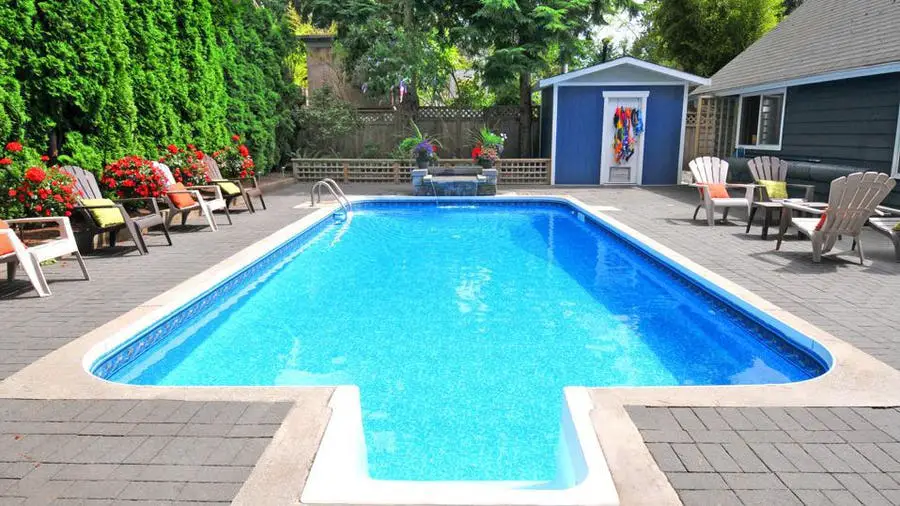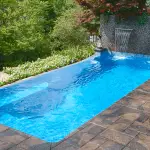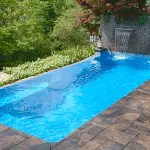A pool can cost anywhere from $20,000 to $50,000, depending on factors like size, materials, and additional features. Swimming pools can provide a refreshing escape from the summer heat and serve as a gathering spot for family and friends.
However, the cost of installing a pool can be a major concern for many homeowners. The price of a pool can vary greatly depending on various factors, such as the size, shape, materials used, and any additional features or accessories you may want to incorporate.
In general, the larger and more extravagant the pool, the higher the cost. It’s important to carefully consider your budget, preferences, and any specific requirements before embarking on a pool installation project. By understanding the factors that influence pool costs, you can make an informed decision and create the backyard oasis you’ve always dreamed of.
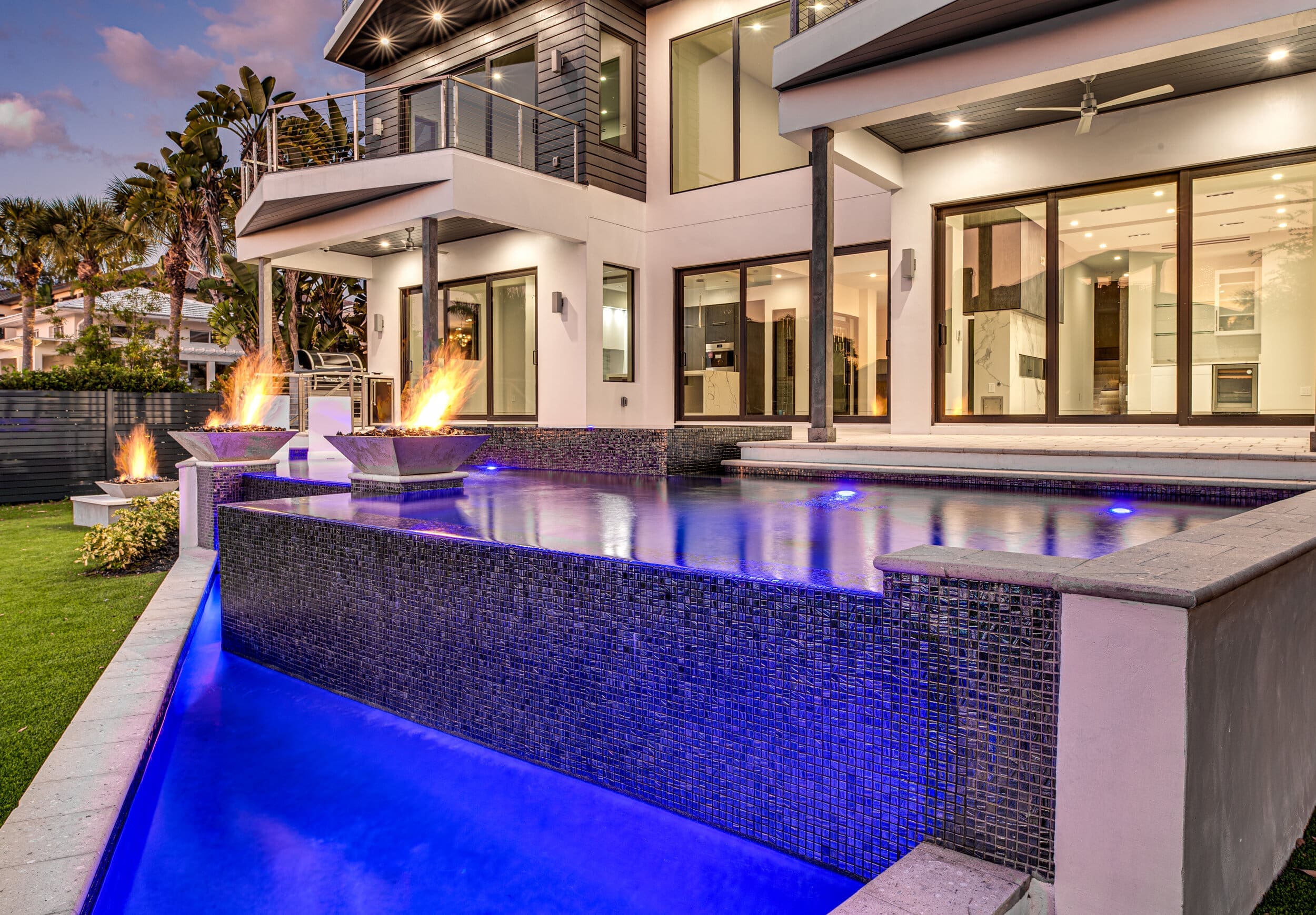
Credit: wahoopools.com
Factors Affecting Pool Cost
Factors affecting pool cost play a crucial role in determining the total expenditure of constructing a pool. There are several key elements that influence the overall cost, including the size of the pool, materials used, and additional features. Understanding these factors is essential for anyone looking to invest in a pool and wanting to have a clear picture of the associated expenses.
Size Of The Pool
The size of the pool is one of the primary determinants of the cost. Larger pools require more materials and labor, thus leading to higher expenses. Generally, the surface area of the pool, the depth, and the shape all impact the final cost. Additionally, larger pools may also require additional maintenance, which needs to be factored into the overall budget.
Materials Used
The materials used for constructing the pool significantly influence the cost. Factors such as the type of pool shell, the filtration system, the decking material, and the finishing details all contribute to the total expense. For instance, concrete pools tend to be more expensive due to the labor-intensive installation process, while fiberglass pools offer a more cost-effective option impacting the overall budget.
Additional Features
Integrating additional features into the pool, such as water features, lighting, heating systems, and automation, can significantly add to the total cost. Each feature comes with its own expenses, including installation and ongoing maintenance, which should be considered when budgeting for the project. While these features can enhance the pool’s aesthetic and functional appeal, they should be carefully assessed based on the overall budget and preferences of the pool owner.
Types Of Pools
In-ground Pools
An in-ground pool is a permanent fixture built into the ground on your property. They are often made from concrete, fiberglass, or vinyl. They offer a wide range of design options and can be customized to fit your space and aesthetic preferences. In-ground pools can increase the value of your property and provide a luxurious swimming experience. However, they typically require a significant investment of $50,000 to $100,000 or more, depending on the size, material, and additional features.
Above-ground Pools
Above-ground pools are more affordable and easier to install compared to in-ground pools. They come in a variety of shapes and sizes and can be dismantled and relocated if needed. These pools are typically made from aluminum, steel, or resin, and are supported by a frame that sits above the ground. The cost of an above-ground pool ranges from $1,500 to $15,000, depending on the size, material, and any additional accessories such as a ladder or pool cover.
Cost Breakdown
Cost Breakdown:
Initial Installation Costs
Installing a pool involves various expenses, including materials, labor, and permits.
Initial installation costs can range from $30,000 to $100,000, depending on the pool type and size.
Cost factors include excavation, plumbing, decking, and any additional features.
Ongoing Maintenance Costs
Pool maintenance is crucial for keeping it in top condition and safe for use.
Monthly maintenance costs typically range from $75 to $200, covering cleaning, chemicals, and utilities.
Over the course of a year, expect to spend around $900 to $2,400 on basic pool maintenance.

Credit: premierpoolsandspas.com
Hidden Costs To Consider
Pools can be expensive, but it’s important to consider the hidden costs. Plan for ongoing maintenance, water and energy bills, and potential repairs to get a true understanding of how much a pool will cost you in the long run.
When planning to build a pool, it’s important to factor in the hidden costs that often get overlooked. These additional expenses can quickly add up and impact your budget. By understanding and accounting for these costs upfront, you can avoid any unpleasant surprises along the way. In this section, we’ll explore a few key areas that you should be aware of when estimating the total cost of your pool project.
Permits And Regulations
Before diving into your pool project, it’s essential to familiarize yourself with the necessary permits and regulations. Municipalities often require building permits, inspections, and compliance with zoning rules to ensure the safety and legality of your pool. These requirements may vary based on your location, so it’s crucial to research and budget for any associated fees.
Landscaping And Hardscaping
Building a pool involves more than just the pool itself. You need to consider the surrounding landscaping and hardscaping elements that complement the pool and create a cohesive outdoor space. This includes features such as decking, patio areas, fencing, and other aesthetic enhancements. These additional elements not only contribute to the overall look of your pool area but also come with their own costs that should be included in your budget.
In addition, there may also be ongoing maintenance costs for landscaping and hardscaping. This can include things like lawn care, trimming, and repairs. It’s important to factor in these recurring expenses when calculating the full cost of your pool project.
By considering these hidden costs and including them in your overall budget, you will be better prepared for the total cost of your pool project. Being aware of these expenses from the beginning will allow you to plan accordingly and ensure that you can enjoy your pool without any financial surprises.
Ways To Save Money
When it comes to building a pool, cost is a significant factor to consider. Fortunately, there are several ways to save money without compromising on the quality and aesthetics of your pool. By making smart decisions during the construction process, you can keep your pool project within budget. In this section, we will explore some of the ways you can save money on your pool installation, including DIY vs. professional installation and choosing cost-effective materials.
Diy Vs. Professional Installation
One of the first decisions you’ll need to make is whether to opt for a DIY installation or hire professionals. While DIY installation may seem like a more cost-effective option at first, it’s important to weigh the pros and cons.
On one hand, DIY installation allows you to save on labor costs, as you won’t need to pay professionals for their services. However, it’s crucial to consider your own skills and experience. Building a pool requires knowledge of plumbing, electrical work, and construction, which may be beyond the expertise of many homeowners.
If you choose to go the DIY route, be prepared to invest significant time and effort into research, planning, and execution. Additionally, ensure that you follow all local building codes and regulations to avoid any future issues.
On the other hand, professional installation offers several advantages. Pool construction experts have the necessary knowledge and experience to complete the project efficiently and to a high standard. They also have access to specialized equipment and materials, which can help minimize costs in the long run.
Choosing Cost-effective Materials
The choice of materials can significantly impact the overall cost of your pool installation. While it’s tempting to splurge on luxurious features, it’s important to consider the longevity and maintenance costs associated with these materials. Opting for cost-effective materials can help you save money in the long term.
When selecting materials for your pool, consider the following:
- Pool Shell: Fiberglass and vinyl are generally more affordable options compared to concrete. Keep in mind that each material has its own set of pros and cons, so choose one that aligns with your preferences and budget.
- Decking: Concrete, pavers, and natural stone are popular choices for pool decking. These materials are durable and can withstand varying weather conditions. However, it’s wise to compare prices and explore alternatives to find the most cost-effective option.
- Filtration System: Consider energy-efficient filtration systems that can help reduce long-term maintenance costs. While these systems may have a higher initial investment, they can save you money on water and electricity bills over time.
By carefully considering the materials and features for your pool, you can strike a balance between cost and quality, ultimately saving money without compromising on the enjoyment and functionality of your pool.
Location Impact On Cost
When considering the cost of building a pool, the geographic location can significantly influence the overall expenses. Factors such as climate, soil conditions, and local regulations play a crucial role in determining the final cost of your pool project.
Geographic Location
The geographic location where you plan to build your pool can impact how much you will spend. For instance, areas with harsh winters may require extra precautions to protect the pool during cold months.
Accessibility For Equipment
Another key factor in determining the cost of a pool project is the accessibility for equipment in your location. If your property is challenging to reach or requires special permits for equipment access, you can expect higher costs for the construction.
Average Costs In Different Regions
When it comes to building a pool, one of the most important factors to consider is the cost. The price of an average pool can vary significantly based on location. Understanding the average costs in different regions can help you plan and budget for your pool project more effectively. Let’s explore the average costs of installing a pool in North America, Europe, and Asia-Pacific.
North America
In North America, the average cost of installing a pool typically ranges from $35,000 to $65,000. The exact pricing can vary based on factors such as the size, type, and additional features of the pool. Additionally, geographical differences and local building regulations can impact the overall cost of the pool installation.
Europe
Installing a pool in Europe can cost anywhere between €25,000 to €50,000. The prices can fluctuate based on the country-specific construction requirements, materials used, and the region’s climate conditions. Factors such as the type of pool, equipment, and landscaping can also influence the overall cost.
Asia-pacific
In the Asia-Pacific region, the average cost of building a pool ranges from $25,000 to $45,000. The pricing may vary based on the specific country, currency fluctuations, and the availability of skilled labor. Geographical location, environmental considerations, and the pool’s design can also impact the total expenses.
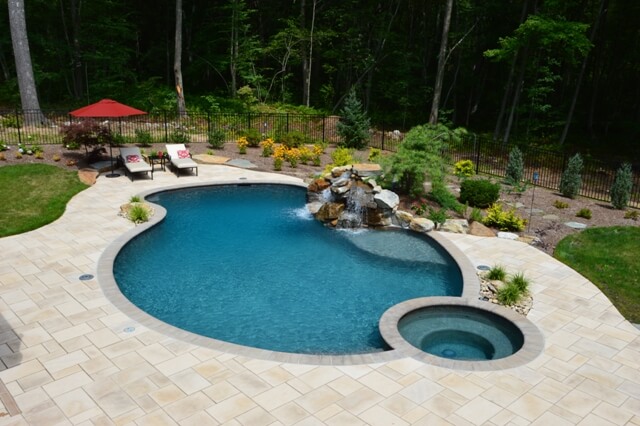
Credit: www.aquapool.com
Final Thoughts And Recommendations
When considering building a pool, it’s essential to carefully plan and budget for both the initial construction costs and the ongoing long-term expenses. By making well-informed decisions and taking practical steps, you can ensure that your pool investment remains enjoyable and financially sustainable over time. Here are some final thoughts and recommendations to guide you through this process.
Budgeting Wisely
When budgeting for your pool, prioritize essential elements such as construction, materials, filtration systems, and energy-efficient equipment. Consider potential additional costs for landscaping, lighting, and pool safety features. Prioritizing quality over cost-cutting measures can lead to a more durable and enjoyable pool in the long run.
Long-term Financial Planning
While considering the initial costs of building a pool, it’s crucial to also plan for long-term financial commitments. This includes regular maintenance, water and energy expenses, repairs, and possible renovations. Implementing energy-efficient solutions and establishing a maintenance schedule can help minimize long-term operating costs and preserve the value of your pool investment.
Conclusion
In wrapping up, the cost of a pool varies based on size, type, and extras. Researching upfront can help you budget wisely for this investment in your home. Remember to consider maintenance expenses in the long run. Ultimately, the joy of having your own pool is priceless and worth the cost.


